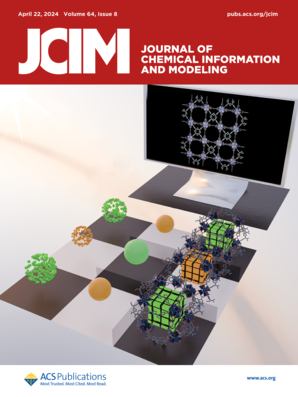Deep-Learning-Based Integration of Sequence and Structure Information for Efficiently Predicting miRNA-Drug Associations.
IF 5.6
2区 化学
Q1 CHEMISTRY, MEDICINAL
引用次数: 0
Abstract
Extensive research has shown that microRNAs (miRNAs) play a crucial role in cancer progression, treatment, and drug resistance. They have been recognized as promising potential therapeutic targets for overcoming drug resistance in cancer treatment. However, limited attention has been paid to predicting the association between miRNAs and drugs by computational methods. Existing approaches typically focus on constructing miRNA-drug interaction graphs, which may result in their performance being limited by interaction density. In this work, we propose a novel deep learning method that integrates sequence and structural information to infer miRNA-drug associations (MDAs), called DLST-MDA. This approach innovates by utilizing attribute information on miRNAs and drugs instead of relying on the commonly used interaction graph information. Specifically, considering the sequence lengths of miRNAs and drugs, DLST-MDA employs multiscale convolutional neural network (CNN) to learn sequence embeddings at different granularity levels from miRNA and drug sequences. Additionally, it leverages the power of graph neural networks to capture structural information from drug molecular graphs, providing a more representational analysis of the drug features. To evaluate DLST-MDA's effectiveness, we manually constructed a benchmark data set for various experiments based on the latest databases. Results indicate that DLST-MDA performs better than other state-of-the-art methods. Furthermore, case studies of three common anticancer drugs can evidence their usefulness in discovering novel MDAs. The data and source code are released at https://github.com/sheng-n/DLST-MDA.基于深度学习的序列和结构信息整合,有效预测mirna -药物关联。
大量研究表明,microRNAs (miRNAs)在癌症进展、治疗和耐药性中起着至关重要的作用。它们已被认为是克服癌症治疗耐药的有希望的潜在治疗靶点。然而,通过计算方法预测mirna与药物之间的关联的关注有限。现有的方法通常侧重于构建mirna -药物相互作用图,这可能导致它们的性能受到相互作用密度的限制。在这项工作中,我们提出了一种新的深度学习方法,该方法集成了序列和结构信息来推断mirna -药物关联(mda),称为DLST-MDA。该方法的创新之处在于利用mirna和药物的属性信息,而不是依赖于常用的相互作用图信息。具体而言,考虑到miRNA和药物的序列长度,dst - mda采用多尺度卷积神经网络(CNN)从miRNA和药物序列中学习不同粒度级别的序列嵌入。此外,它利用图形神经网络的力量从药物分子图中捕获结构信息,提供对药物特征的更具代表性的分析。为了评估dst - mda的有效性,我们基于最新的数据库为各种实验手工构建了一个基准数据集。结果表明,dst - mda比其他最先进的方法性能更好。此外,对三种常见抗癌药物的案例研究可以证明它们在发现新型mda方面的作用。数据和源代码在https://github.com/sheng-n/DLST-MDA上发布。
本文章由计算机程序翻译,如有差异,请以英文原文为准。
求助全文
约1分钟内获得全文
求助全文
来源期刊
CiteScore
9.80
自引率
10.70%
发文量
529
审稿时长
1.4 months
期刊介绍:
The Journal of Chemical Information and Modeling publishes papers reporting new methodology and/or important applications in the fields of chemical informatics and molecular modeling. Specific topics include the representation and computer-based searching of chemical databases, molecular modeling, computer-aided molecular design of new materials, catalysts, or ligands, development of new computational methods or efficient algorithms for chemical software, and biopharmaceutical chemistry including analyses of biological activity and other issues related to drug discovery.
Astute chemists, computer scientists, and information specialists look to this monthly’s insightful research studies, programming innovations, and software reviews to keep current with advances in this integral, multidisciplinary field.
As a subscriber you’ll stay abreast of database search systems, use of graph theory in chemical problems, substructure search systems, pattern recognition and clustering, analysis of chemical and physical data, molecular modeling, graphics and natural language interfaces, bibliometric and citation analysis, and synthesis design and reactions databases.

 求助内容:
求助内容: 应助结果提醒方式:
应助结果提醒方式:


